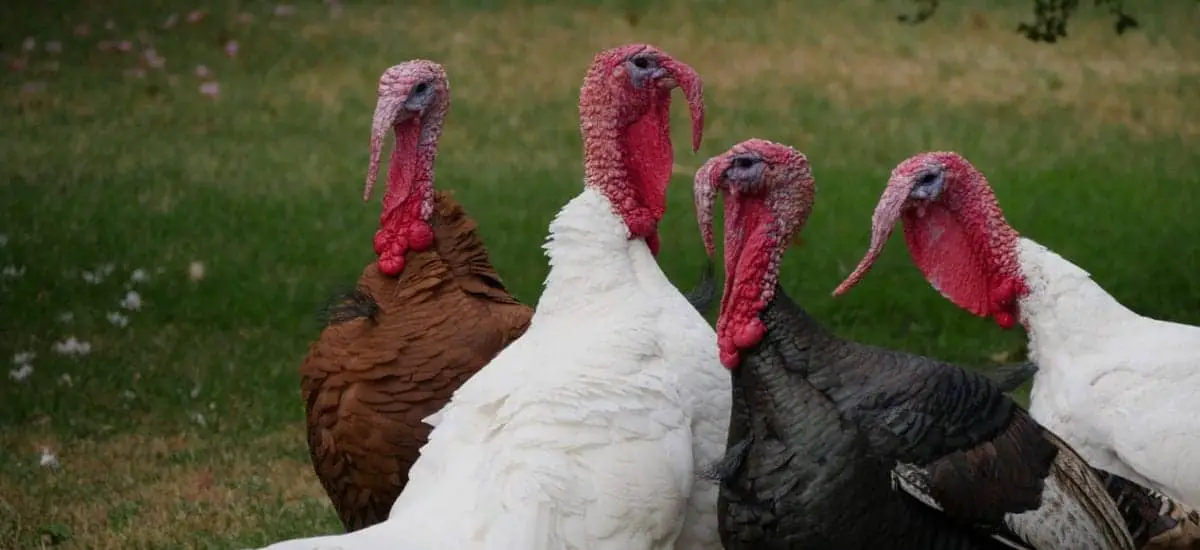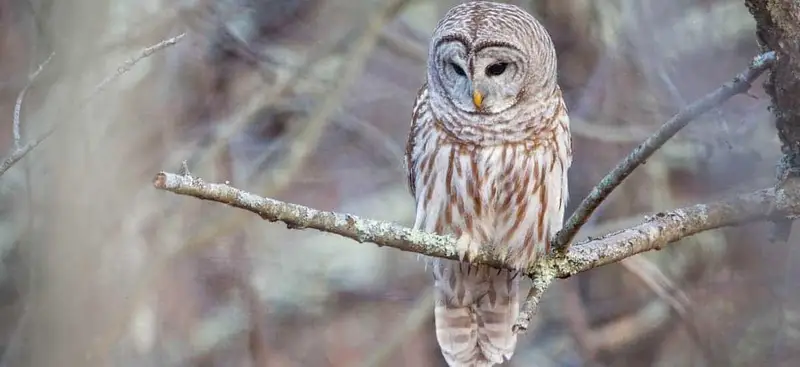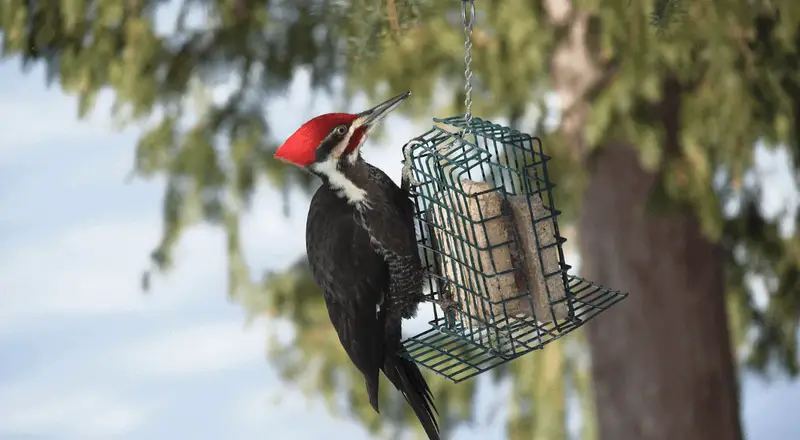
Wild turkeys can be provide quite a fascinating addition to your yard. Providing acorns in plenty as well as berries and seeds will fill their stomachs and attract them in large flocks. Plant oak and pine trees beside clearings will give them the perfect habitat to live and breed their young. Attracting wild turkeys is fantastic however there are some considerations you must know before doing so.
Turkeys in the wild are more plentiful than you might think. Because they dine mostly on common nuts, they can be found across the country. But attracting a wild turkey to your location might take a little work if you want to see these remarkable creatures. This is because, in addition to being beautiful creatures, they are also quite picky about where they live.
If the goal is to attract the bird and not the popular liquor, then here are a few tips for bringing a few wild turkeys to your neck of the woods.
How to attract wild turkeys?
1. Correct food
Turkeys love acorns to the point where having them on your property, especially during the winter will help bring them to your yard. Keep in mind that turkeys have a wide variety to their diet which starts with grasses and leaves in the spring. This changes to berries, seeds, and insects in the fall. But acorns will be consumed year-round.
If you are short on acorns, then beech and hickory nuts are a good substitute. This is especially true in the winter when little other food for turkeys are available. You can also try planting legumes, winter wheat, and clover which provides some forage for wild turkeys in the late winter and early spring. You can also try adding grapes as they provide yet another food source for the winter.
If natural food sources are difficult to get hold of, Wild Turkey feed can be extremely tasty, nutritional and effective at attracting wild turkeys.
2. Habitat
Providing acorns is one thing, creating the living conditions that are perfect for wild turkeys is another. Ideally, your property will need to have a wooded area as well as a clearing next to it. This is because turkeys live in the forests but like to hunt for food in the clearings next to the trees so they can quickly take cover if needed.
The clearing is the perfect place for young turkeys to find the many insects and spiders they feast upon in the first month or two of their lives. However, unless you own a considerable amount of land, you’ll probably not see more than a couple of wild turkeys in any one place. This is because they are so spread out to find the food they need. One wild turkey per 30 acres is quite common.
3. Oak and Pine Trees
These trees provide the nuts needed for turkeys to survive the winter, so they should be protected on your property if you want to see them around. This means keeping at least a few oaks and pine trees in locations that are accessible to the wild turkeys and provide what they need. It does help if you have a garden or other agricultural area near the oaks and pines to provide another food source for the wild turkeys.
4. Water
As well as food and shelter, turkey needs water to survive. Using a low elevation bird bath will entice turkeys to visit. They will drink and wash in large flocks if your pool can accommodate them. Ensure that the water is regularly checked, cleaned and refilled. Stagnated water is a breeding ground for many bacteria and diseases so please ensure that you offer only freshwater for these wild turkey.
Can attracting Wild Turkey be a problem?
Turkeys are both majestic and fascinating but can create some issues. It’s important to know the following details before attempting to attract Wild Turkeys. You don’t want damage to your own property or the turkey itself. Gauge if your property is appropriate to accommodate such majestic birds.
1.Eating Habits
Turkeys are large omnivores that will eat nearly everything! They travel in large flocks up to a dozen turkeys. Be wary if you’re growing vegetables or fruits in your gardens. Ensure that any bird feeders are well out of the reach of turkeys as they will devour all of your feed in no time!
2. Damage
In addition to eating your crops, they can also damage flowers, patio furniture, sheds, fences, and feeders. Turkeys stop at nothing to fill their stomachs so please ensure that if you do attract these birds that their food is not too close to other things in your yard. Like all animals, Turkeys drop their feces everywhere. However these large birds travel in large flocks and if you attract them too close to your home, you might have quite a bit of cleaning to do!
3. Aggression
On rare occasions, turkeys can cause injuries. Particularly during the breeding season, males can become territorial and aggressive. Although turkeys might look harmless, please keep children and pets well away. They possess razor talons, sharp bills, and incredibly strong wings.
4. Vehicles
If you live beside a busy road or in a populated area, we do not recommend trying to attract wild turkeys. Turkeys are often killed by vehicles and can cause significant damage to the vehicle itself due to their size.
Attracting wild turkeys to your property requires a little work. However, it can be worth it to have these wonderful birds roaming about. Just remember that they are as picky as they are beautiful. So, if you want to see a bird diva in action, having a wild turkey on your property can be free entertainment.
Eastern Wild Turkey Facts!
What are the best plants to attract wild Turkeys?
If you are looking to entice wild turkeys into your yard by using plants, here are a few suggestions on what plants they like:
- Chufa
- Clover
- Ryegrass
- Corn
Be careful if you are planning to invite turkeys into your yard. Many people forget just how big these birds can be, leaving their yard open to potential damage. Turkeys are also likely to clear out any feeders you might already have, which can even stop other species from visiting.
Wild turkeys are among the most peculiar of birds; these curious, grounded creatures are very rarely seen, though they’re found in nearly every state!
Wild turkeys vary massively from their domesticated cousins; they may share a select few similarities, but these birds are generally VERY different. Domestic turkeys have been bred through countless generations to obtain ‘desirable’ qualities that chefs and food-production companies can utilise. This has resulted in a fatter, flightless bird with much shorter legs than its wild counterpart.
Domestic turkeys don’t need the same survival skills as wild turkeys do. After all, they’re reared and bred by humans who will ensure that they are well fed and protected! This is why they can get away with much fancier, vibrant ant colourful plumage, unlike a wild turkey which is decked out solely in earthier tones.
Wild turkeys are also INCREDIBLY fast; it’s said that they can outrun a galloping horse for a short duration! Whilst they don’t have the ability to fly for long periods, a wild turkey is able to take travel approximately one mile through the air.
Are wild turkeys endangered?
Wild turkeys might be rare, but that’s only because they’ve learned to hide well in the forests! They aren’t considered to be endangered, with a conservation status of ‘Least Concern’. It’s thought that the population of wild turkeys is on the incline, so hopefully, you’ll start seeing more of these beautiful birds.

More Articles.

Best Binoculars for Bird Watching 2020
Article Summary: Best Budget Binoculars: Nikon 8250 Aculon 16×50 Best Mid-tier Binoculars: Nikon Monarch 5

How to attract Owls to your yard?
The best way of attracting Owls to your yard is to offer them a nesting

How to attract Woodpeckers to your yard?
Woodpeckers are often elusive to the sight but distinct to the ears. Their famous pecking

About Us
We are avid bird-watchers who recently retired, allowing us more time to travel the world. Fortunately, we have managed to visit numerous countries around Europe, Asia, and America. Watching and photographing birds has been a passion for many years and we are making the most of the extra time on our hands!


